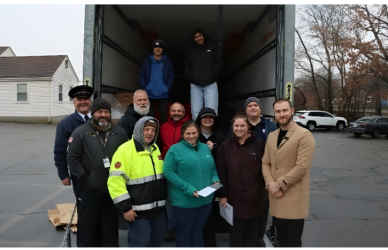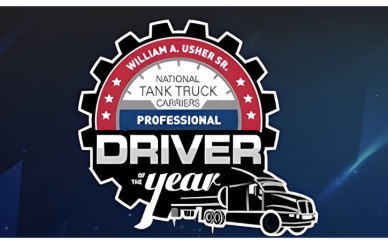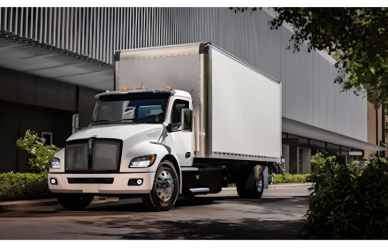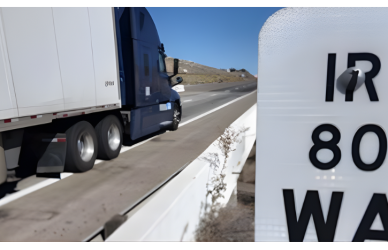Truck drivers must pass several skills tests before they’re permitted to get behind the wheel including a physical test that assesses their risk for sleep apnea. The Federal Motor Carrier Safety Administration (FMCSA) has recently released proposed updates to its medical examiners’ handbook, reviving the long-held controversy on how exactly it is decided that sleep apnea should necessitate a driver being removed from work, as reported by Transport Topics.
Truck drivers and their respective trade groups have been vocal about their concerns over how the FMCSA’s medical examiners’ handbook diagnoses sleep apnea. They feel as though the handbook should be revised for increased clarity.
Most drivers agree that sleep apnea increases the risk of crashes, and that it is important to diagnose and treat the sleep disorder. Drivers are concerned that how the agency currently assesses sleep apnea, and its risks, does not have the same priority as other mandates.
The FMCSA’s handbook has been revised over seven years, when it was first removed from the internet. This left medical examiners to come up with their own solutions and answers when they screened drivers for health risks like sleep apnea. This prompted critical responses from some truck drivers.
“I agree there are some who might need apnea machines, but once again [you’re] pushing more drivers (older, more experienced) out the door again,” wrote truck driver William Caulfield.
Others felt like the regulations were inconsistent and were making drivers’ lives more challenging.
“Every time I turn around they’re changing the rules. Stop messing with regulations. Leave truck drivers alone,” wrote trucker Daniel Hochleutner.
Some drivers felt that sleep apnea diagnoses were given not to help the drivers and allow them to seek treatment, but to benefit corporate entities.
“There are simply too many instances where the medical examiners work for the same corporate medical behemoth as the sleep study doctor, which corporation also conveniently sells the device and supplies,” wrote trucker Pam B. “Even if they don’t actually work for the same company, often the alliances between these parties are far too cozy and mutually profitable to pass the ‘sniff test.’”
Larger trucking associations are also weighing in on how the FMCSA manages instances of sleep apnea in drivers. The American Trucking Associations (ATA) shared comment on the proposed updates.
“ATA recognizes the continued interest in obstructive sleep apnea (OSA) as a safety concern,” the trucking trade organization wrote in comments. “While [federal regulations] have specific criteria related to driver medical issues such as diabetes, cardiovascular disease, stroke and hypertension, these medical issues are typically known at the time of the exam. With regard to OSA, a medical examiner may suspect OSA, and therefore, require a driver submit to a sleep test before continuing with the certification process. While guidance may help in these situations, our experience is that it leads to more confusion regarding what is and what is not required by the medical examiner.”
The ATA went on to share their explicit concerns over what is included about sleep apnea in the FMCSA’s medical examiners’ handbook.
“While the steps taken by FMCSA’s Medical Advisory Board to address this are greatly appreciated, we fear that revisions contained in the draft handbook continue to represent guidance and not regulation that will ultimately lead to an uneven approach with regard to screening for OSA. Should FMCSA choose to prescribe OSA screening and treatment guidance or regulations, FMCSA must do so through the rulemaking process. This is not just the opinion of ATA but required by law. ATA feels the current draft allows for too much discretion and will further facilitate inconsistent commercial motor vehicle medical examinations.”
The Truckload Carriers Association’s concerns and comments reflected those made by the ATA.
“The development of any future regulation on establishing objective standards for sleep disorder screening, testing and treatment should be focused on conditions that pose a substantially elevated crash risk based on sound data and analysis, be cost-beneficial, and promote effective treatments that minimize the impact to motor carriers and drivers,” TCA wrote. “TCA maintains that any rulemaking efforts in this regard should only be done so with substantial, coordinated input from key industry stakeholders.”
The Owner-Operator Independent Drivers Association (OOIDA) released comment on their opinion of how the handbook should be referenced when sleep disorders are being diagnosed.
“The handbook should acknowledge that examiners should not overrule personal medical physicians,” the Owner-Operator Independent Drivers Association wrote. “The handbook should stress the importance of examiners accepting the medical judgment of a driver’s personal physician. Too often, certified medical examiners ignore personal physician’s judgments and deny medical cards to drivers.”
The Alliance of Sleep Apnea Partners included a statement on the need for the FMCSA to propose clear guidelines for medical examiners in diagnosing and treating sleep apnea.
“These recommendations are specific and provide clear guidance, and FMCSA should encourage the medical examiners to review these recommendations upfront prior to making any decisions on certifications,” the Alliance wrote.











